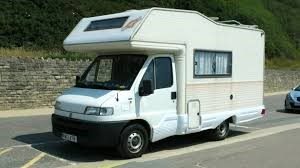 When a deep-cycle battery is maintained appropriately, it should last you at least 6 years, if not longer. Regrettably, there are some RV owners who actually get their RV batteries replaced every other year, and sometimes even every single year. It’s not hard to extend your battery life. You just need to do some routine care and maintenance.
When a deep-cycle battery is maintained appropriately, it should last you at least 6 years, if not longer. Regrettably, there are some RV owners who actually get their RV batteries replaced every other year, and sometimes even every single year. It’s not hard to extend your battery life. You just need to do some routine care and maintenance.
Please note that you should always remember safety first if you work with lead-acid batteries. Always remove jewelry and wear safety glasses and gloves. Don’t smoke here, and avoid any open flames around your batteries.
Keep reading to learn 10 tips you can use to extend the operating cycle of your RV batteries.

1) Extend the life of the RV battery by recharging it as soon as you can after it is discharged, along with regular maintenance. Sulfation is the primary culprit behind lead-acid batteries that are dead. If a battery gets into a lower state of charge, then small crystals might start forming on its plates, which is known as sulfation. A battery that’s allowed to stay like this for a long time without any recharging is eventually going to be ruined. The process of sulfation actually starts when the state of charge dips under 12.4 volts or 80 percent. You can avoid this by recharging your batteries faster.
2) Avoid letting 12-volt batteries discharge so much that they get under 12 volts. You might think that sounds a bit weird, but when one of these is fully charged, it’s actually holding 12.7 volts. If it reads as being under 12 volts, then it’s state of charge is 50 percent or less. Measure your voltage with a digital voltmeter. The more you measure your voltage, the sooner you’ll see how your battery discharges over time, meaning you’ll start anticipating good times to recharge. Make sure that your voltmeter is set for DC voltage. Put the black lead on your negative terminal and your red lead onto your positive terminal in order to read the battery voltage.
3) Expand the life cycle of your batterys by reducing the depth of its discharge. Any battery that gets discharged down to 50 percent each day is going to last you twice the span of time as a battery that gets cycled all the way down to 20 percent on a daily basis.
4) RV batteries can get discharged over time thanks to their parasitic loads. Examples of the parasitic loads of an RV include TV antenna power boosters, stereos, clocks, LP gas leak detectors, and appliance circuit boards. Does your RV feature a battery-disconnect switch? If so, then be sure you switch it to its OFF position whenever the RV is in storage or not in use.
5) Two things that kill batteries are overcharging and hot temperatures. You need to check your battery cell water levels much more frequently during heat waves and any stretches of intense battery use. You can do your lead acid batteries a lot of good by checking their electrolyte levels and giving them distilled water per the manufacturer guidelines.
6) Only use mineral-free water when you do add water. Distilled water is your best choice. Normal tap water can result in calcium sulfation.
7) Appropriate battery charging happens in stages. Use a bulk charge to get your battery up to 90 percent over the first several hours. The last 10 percent happens through an absorption charge so that loss of water and gassing don’t happen in the battery. Finally, a float charge will keep the full charge. You can find RV converter chargers that feature this three-stage process for proper battery charging, although not all chargers do this.
8) Only water batteries after charging, with the exception of exposed plates before charging. If your battery plates are exposed, then you need to add enough water to both cover the plates as well as charge up the battery. Once the battery gets fully charged, then you should fill every cell down to the vent well bottom.
9) Leave any vent caps on your batteries during charging in order to avoid any water loss because of bubbling and gassing.
10) Did you know that the plastic and lead used in battery manufacturing can all get recycled? As a matter of fact, over 95 percent of all battery lead gets recycled. Be sure you’re a part of that 95 percent.










